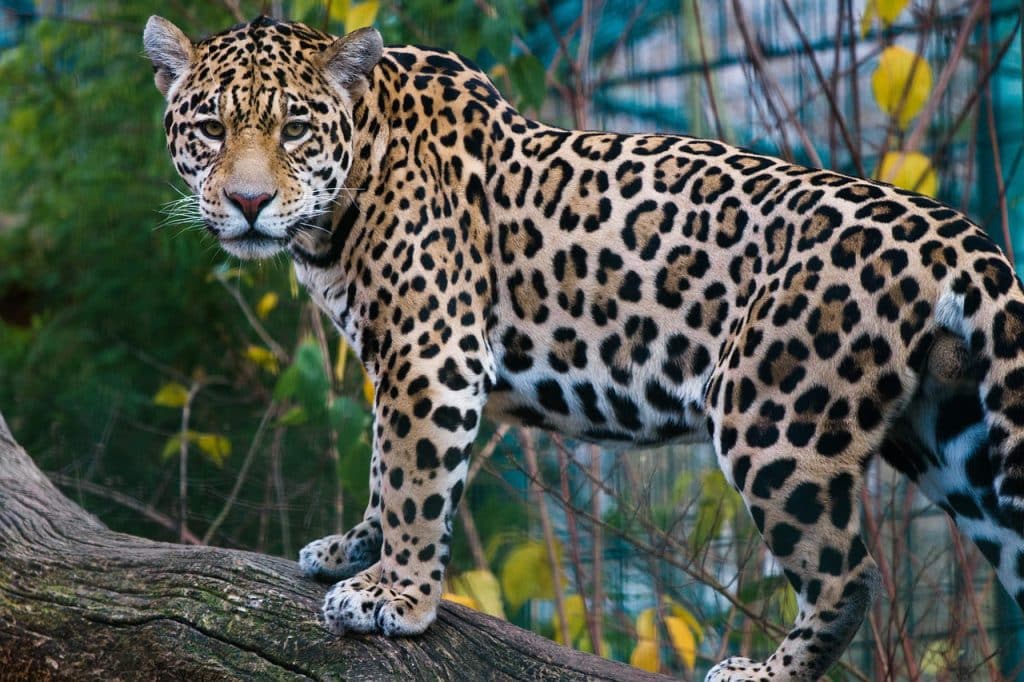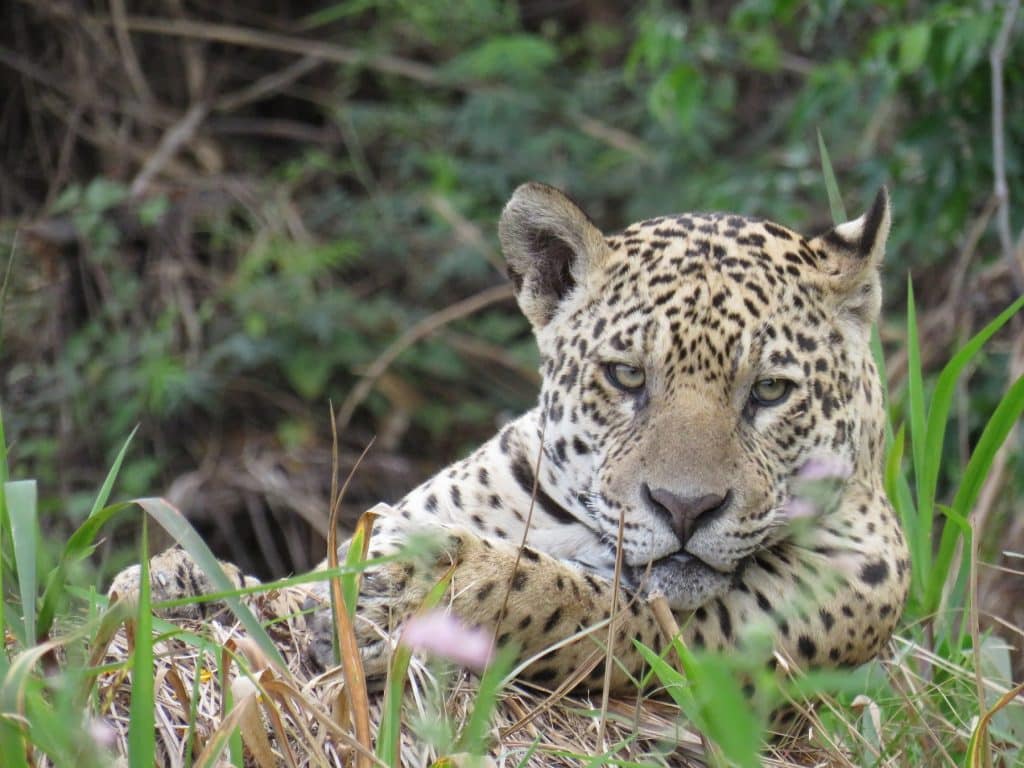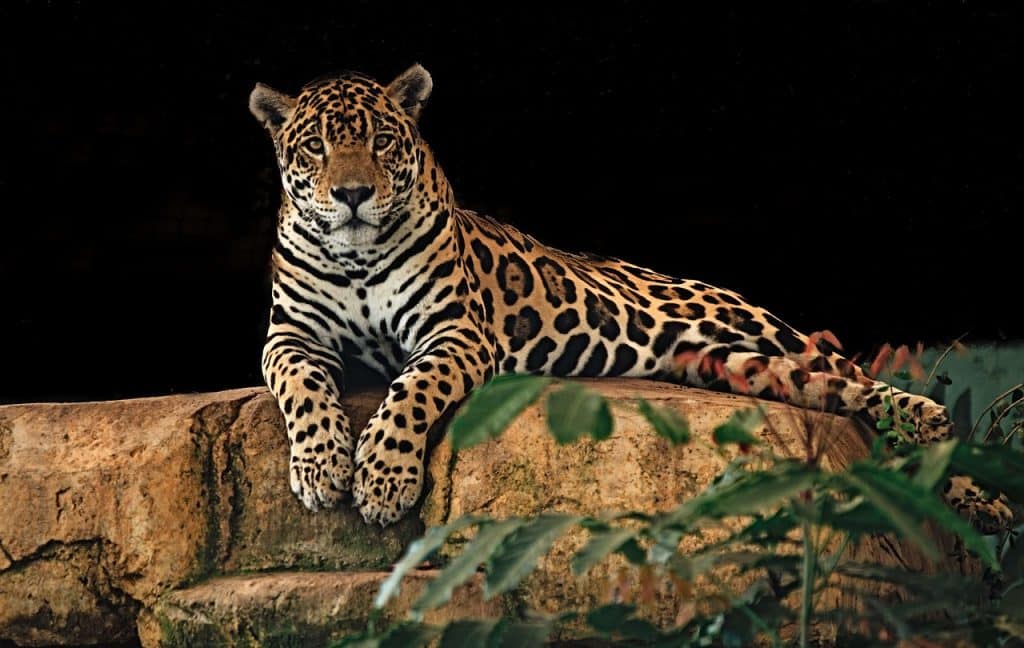Discover the remarkable jaguar, a spectacular and powerful creature that lives in the deep, dense jungles. With its alluring patterns and powerful gaze, this majestic big cat captures your interest and piques your imagination. Join us as we explore the mysteries of this amazing animal on International Jaguar Day 2023 on an exhilarating journey through the lovely trees. Discover its unique characteristics, how many are still in the wild, and comprehend why it is essential to safeguard them. Prepare yourself to be astounded by the enigmatic jaguar’s amazing beauty and power.
—
Introducing the Amazing Jaguar
The jaguar ( Panthera onca ), the only big cat in the Americas and the third-largest on the planet, effortlessly combines grace with raw power. They resemble leopards, but their coats have larger, more spaced-out rosettes, frequently with key spots inside each, giving the pattern a less clumped appearance.

These large cats are adapted to various environments and primarily reside in the Americas. They can be found in the Pantanal Wetlands ( Brazil ), Gran Chaco ( Argentina, Paraguay, Bolivia ), and Cerrado biome in Brazil, as well as the Amazon Rainforest ( Brazil, Peru, Ecuador, and Colombia ). Additionally, they travel throughout Central America ( Mexico, Belize, Costa Rica, Guatemala ) and Mexico’s Yucatán Peninsula.  ,
Despite their adaptability, habitat loss puts jaguars at risk. To keep these beautiful cats safe in their various habitats, conservation efforts are essential.
Jaguars are very important to the locals where they roam. In aboriginal cultures, they serve as symbols of power in addition to being powerful predators. These large cats represent a connection to nature and are mentioned in native legends and customs. Some people view them as unique beings or guardians. Jaguars even generate jobs and economic benefits through wildlife tourism. But, jaguars can be problematic in areas where people farm. In order to respect the cultural and natural heritage of these wonderful creatures, conservation efforts seek to find solutions that allow people and jaguars to coexist peacefully.
The Silent Decline in Population Status
Despite its renown status, the jaguar is experiencing a silent decline, with the World Wildlife Fund ( WWF ) estimating that it has an estimated population of about 173, 000. These magnificent creatures are in danger from quick habitat loss brought on by deforestation and individual encroachment. The difficulties for jaguar populations are also made worse by poaching and disputes with farmers. Since they have generally been hunted for their fur, they are under an increasing threat from poaching. Furthermore, China is receiving an increase in the illegal trade in jaguar teeth and bone products.  ,
New research shows a worrying trend in jaguar numbers across their range, which is concerning. The great cat’s way of life is disrupted by human activity in jaguar habitats, which raises the possibility of human-wildlife conflicts.  , The once-vast territories these great cats called home are shrinking, leaving them vulnerable to a constantly shifting environment.
Conservation Status: The Need for Quick Action
The jaguar is currently listed on the Red List of the International Union for Conservation of Nature as” Close Threatened.” This situation indicates a pressing need for action and attention. In order to protect the future of these memorable creatures, immediate, coordinated efforts are required due to the loss of habitat and the rising human-wildlife conflicts.
Scientists and conservationists are sounding the alarm, emphasizing the necessity of protecting jaguar habitat and reducing human-wildlife conflicts. Without quick and decisive action, the jaguar’s passive decline could reach a destructive crescendo.

You might even be interested in: The Rewilding Project Sees Jaguars Return to Argentina’s Wetlands
A Collective Symphony of Hop Conservation Efforts
Initiatives to build and connect protected corridors, ensuring jaguars ‘ safe passage, are gaining traction. In order to foster coexistence, conservation organizations work with local communities to address the underlying causes of conflicts and promote environmentally friendly practices. These initiatives seek to safeguard jaguars as well as the gentle equilibrium of their ecosystems.
Community-based conservation initiatives have been successful in reducing conflicts and fostering a peaceful coexistence between humans and jaguars in some areas. Campaigns for education and awareness are crucial to these initiatives because they help people better understand the importance of jaguars in preserving good ecosystems.
Additionally, nearby communities are very important to the conservation story. By involving them in decision-making processes and highlighting the financial benefits of ecotourism, conservationists are promoting a sense of shared responsibility. Successful conservation efforts are increasingly centered on sustainable development that benefits both humans and jaguars.

The fate of the jaguar depends not just on conservationists but also on the decisions we make on a daily basis. We take on the role of jungle guardians by promoting green practices, spreading awareness, and fostering coexistence, ensuring that the mysterious roar of the jaguar reverberates throughout the wilderness for future generations. The time has come to take action because by protecting the jaguar, we maintain the pleasant harmony of our shared home.
Pictured as a feature: Pixabay
10 of the Most Protected Animals in the World in 2023 may also interest you.


